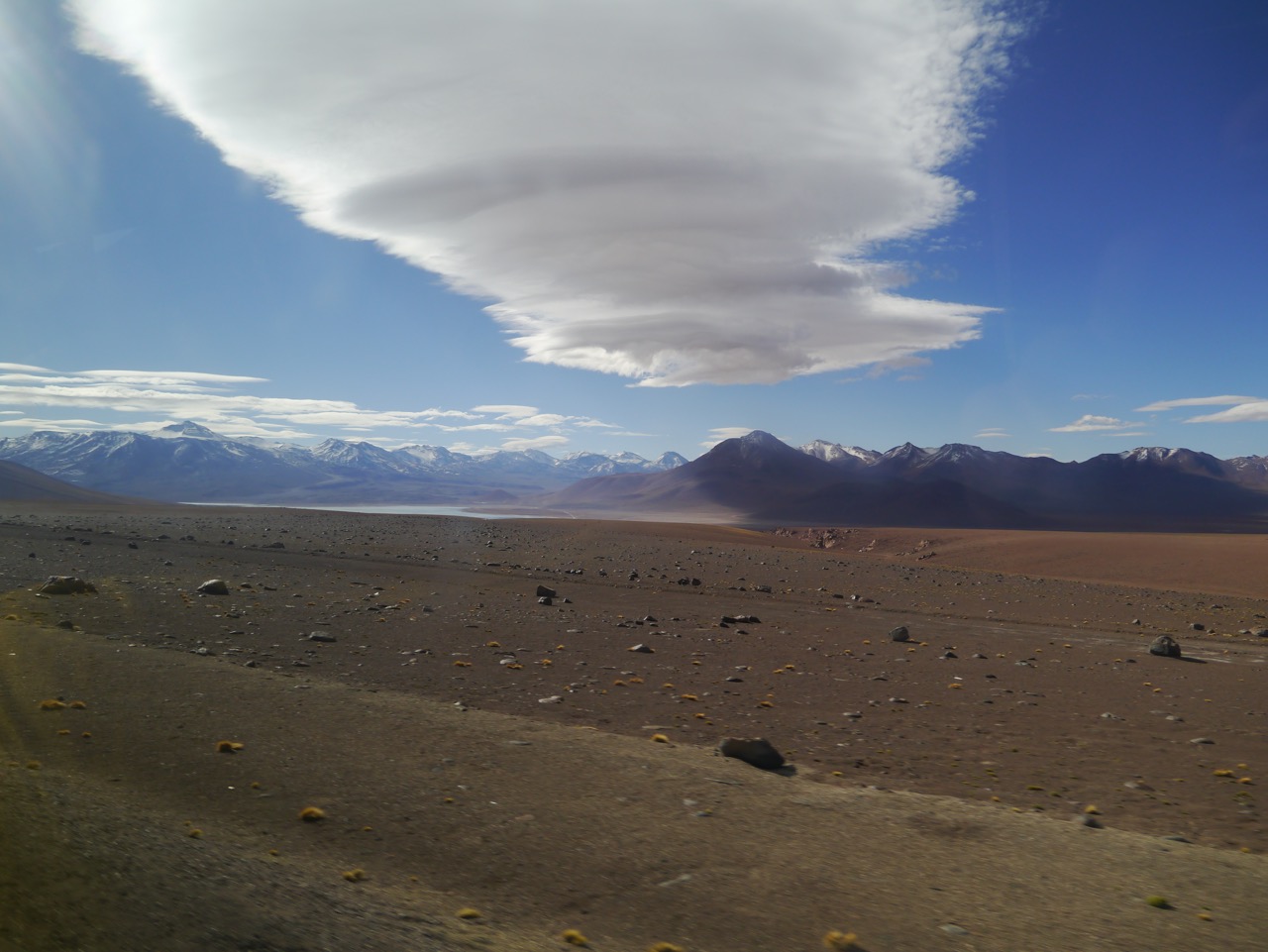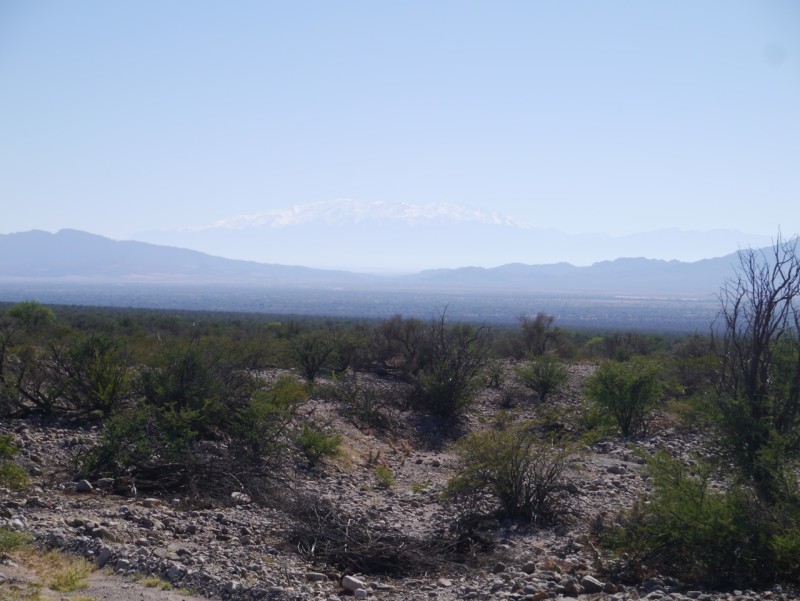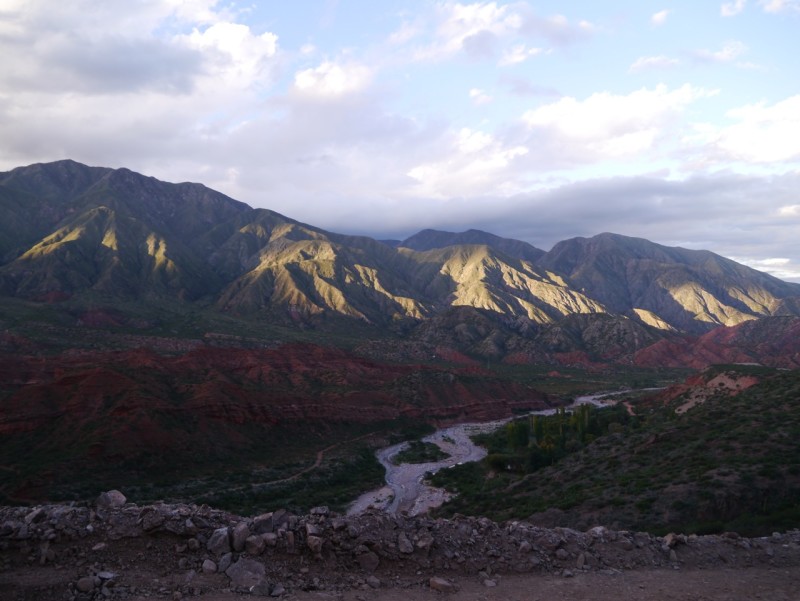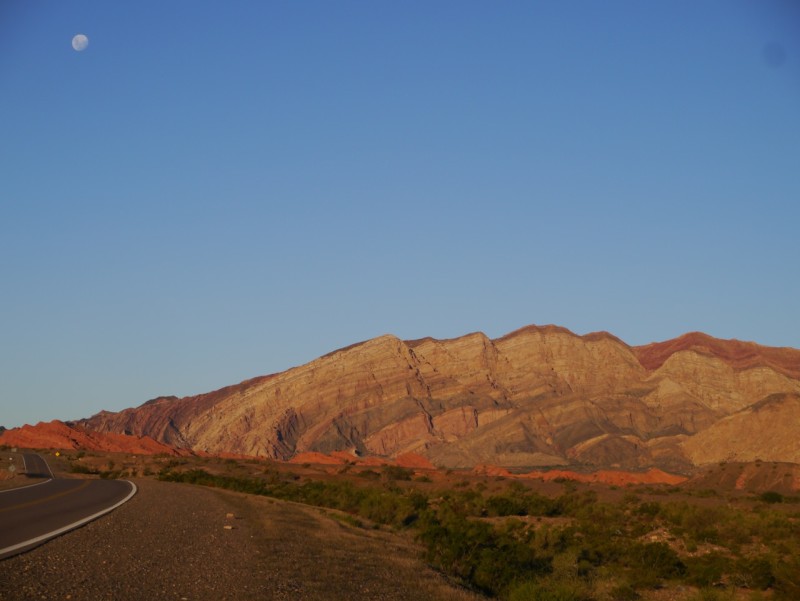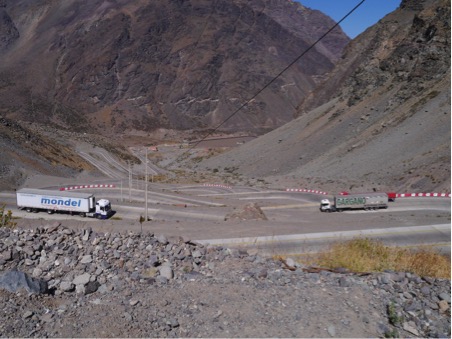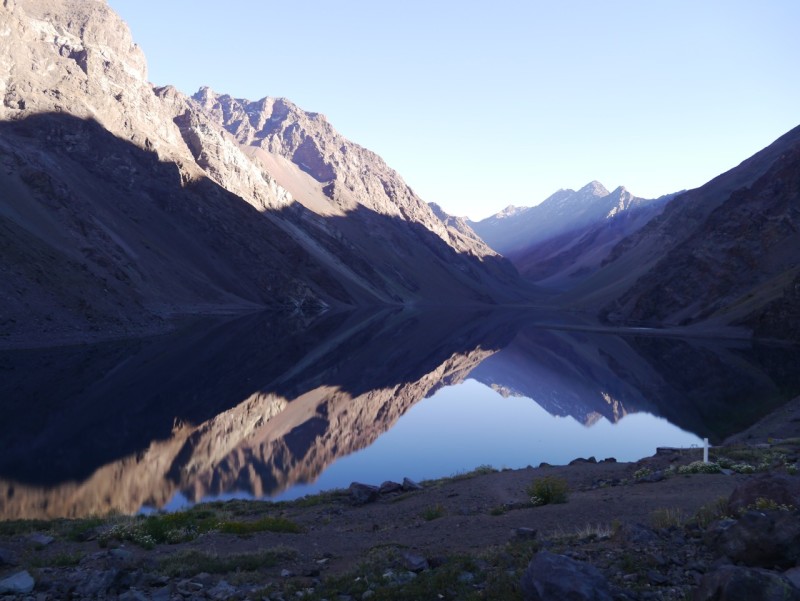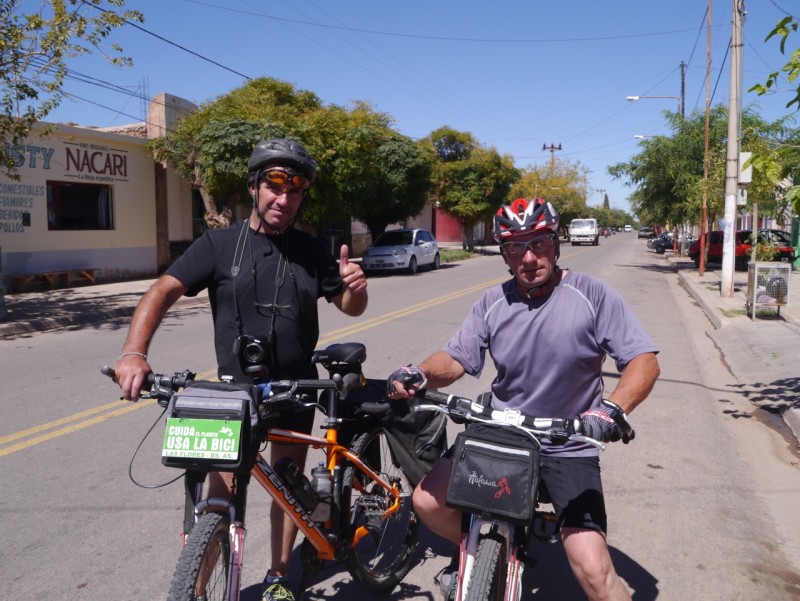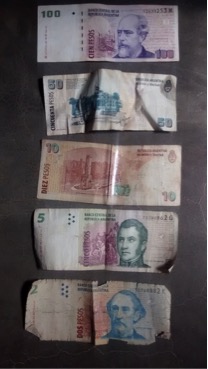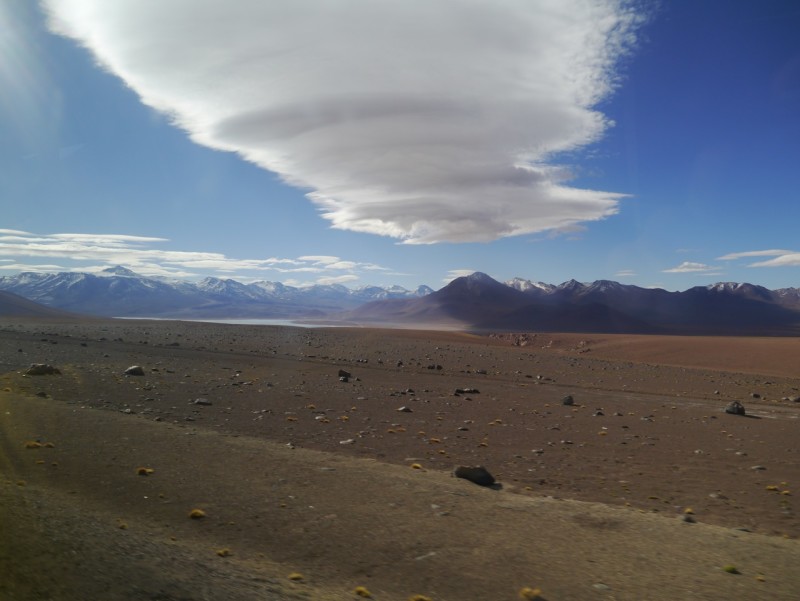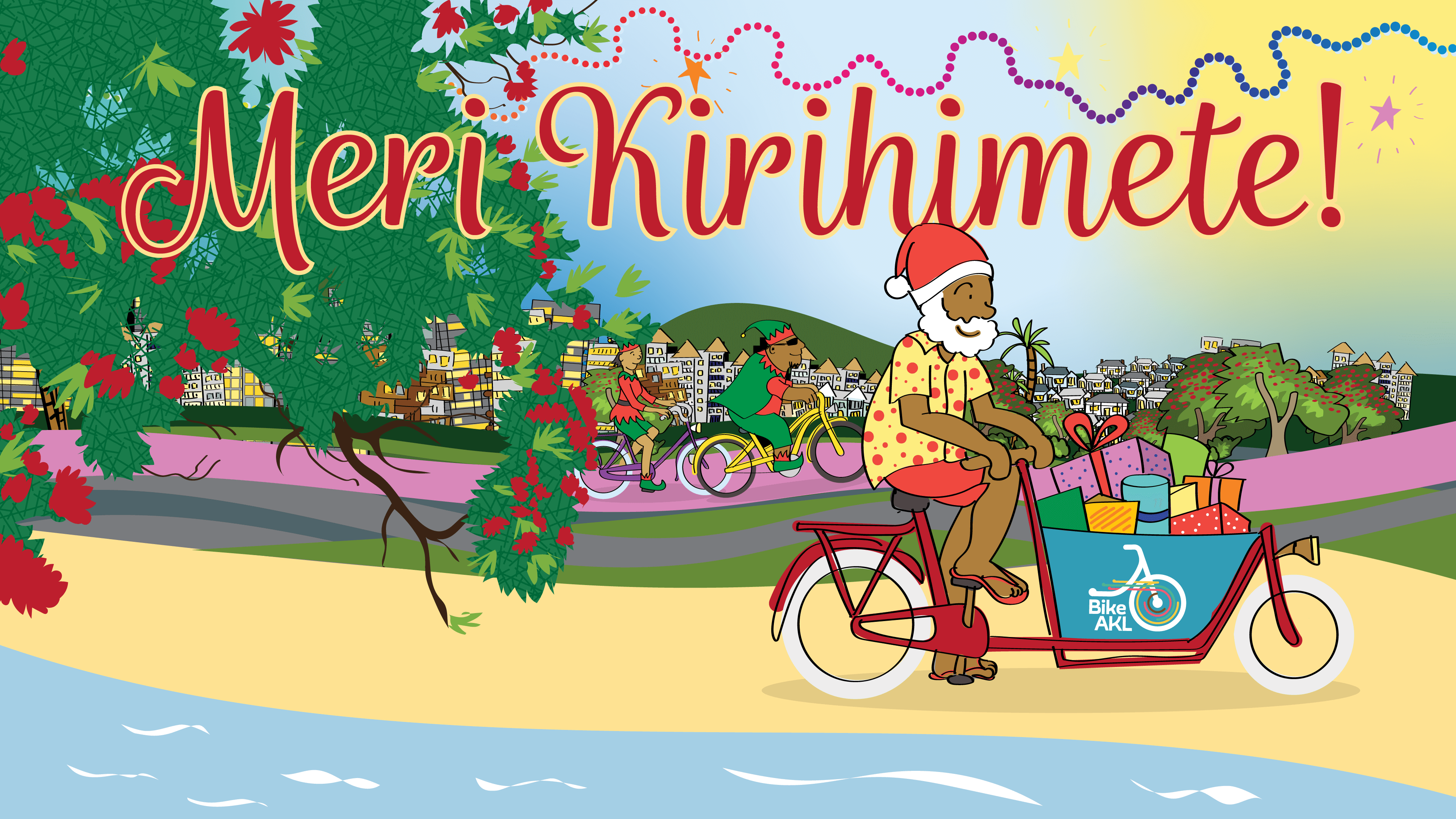Christopher Dempsey made good this year on a long-held dream – to bike through South America. Here he shares the ups and downs of his solo trip over Andean passes and through sleepy little towns… and tells us how it all began.
Canada, the mid-1990s: a cold winter’s day, snow on the ground, -20 outside with windchill of -30. On TV, Jack Pizzey introduces the latest instalment of his documentary series about South America: ‘Sweat of the Sun, Tears of the Moon’. The continent was thousands of kilometres south of where I sat in my Montréal living room… but a dream of travelling there took sudden hold, and wouldn’t let go.
It would take three attempts and nearly twenty years to come true, but I finally made it. In March 2015, I flew from Auckland to Santiago in Chile, and then toured Northern Argentina by bike.
Even now, when people ask about my travels, I struggle to convey the emotions I had each day I cycled. Pretty much all my days were full of wonder and delight at the landscape I was travelling through. For instance, this day was magical:
This was the continuous view just off to my right as I rode along – a snow-clad mountain range (Los Fatimas) in the distant haze, framed between two smaller ranges in the foreground. The angle of the sun that day meant that the haze was the exact same shade as the blue of the sky above the snowy peaks, so it appeared as if the snowy peaks were simply hovering in the air. Absolutely ethereal, and delightful to observe.
And a few days, true to cycle-touring everywhere, were just annoying. The least magical moment of my travels? Being unable to repair a puncture, and having no spare inner tube. I had just passed the Argentinian border at the top of the pass, and was having fun going downhill, until… bang. Very frustrating. I had to walk my bike to the nearest village – Punta del Inca (4km away) – and catch a bus to Mendoza from there.
But then you have another magical day like this, and forget the frustration:
This was on the downhill side of a pass, as the sun was slowly sinking. There were roadworks along the way, done in a rough-as-guts South American style, and I had a tricky time for about 2km. But on my left as I rode was this view. The foothills of the Andes, the red rock, and the river, lit by the setting sun.
Not much later, I was to lose a lovely bottle of Cabernet Franc I’d collected that morning in Villa Union, when I hit a bump as I flew downhill. The bottle, tucked on top of my panniers, soared lose into the air and fell with sickening smash on the road. What better confirmation that there will be ups and downs on any trip. (Lesson? Put bottles of good wine securely away, deep inside a pannier.)
My absolute favourite moment in Northern Argentina was after a long day riding the highway, I arrived at a small town, but I didn’t like its vibe, so I rode out of town. Some 3km up the road, I encountered the most incredible geology, highlighted by the sinking sun, with the moon lit up in the sky behind it: a small ribbon-like mountain range, flowing curvaceously out of the earth. It was sublime.
When I tell people I cycle toured in Northern Argentina, they usually ask: why? Of all the places in the world I could go, why here? The Jack Pizzey TV series was one huge motivator – and the landscape was another.
Aotearoa has an abundance of bush, and sea. I wanted something that was the opposite. I had read many online journals by cycle tourists in the Andes and Northern Argentina, and their photos mostly depicted a beautiful barrenness. Also, the dry environment promised an absence of sandflies or mosquitoes. And finally, well… the bragging rights attached to biking the Andes: “Oh yeah, no big deal cycling up to 3400m, easy peasy.” (And it was no big deal, relatively speaking, cause South American road builders zig zag up the mountains, so the gradients were not that steep).
This is looking down from near the top of a climb up to the pass. There is another 10km to the top at 3400m, but this was the steepest bit with a number of switchbacks. Charmingly, each curva was numbered. There were about 30 in all.
But then I arrived to this, near the top, on the Chilean side. Portillo: a famous ski resort in winter, but in summertime, deserted. In the large hotel, with only around 5 staff in attendance, I had a burger and beer to replenish and celebrate. I’d read that you could camp on the (very rocky) lake shores down below the hotel, so I asked if it would be all right to do so. A shrug of shoulders and a very laconic ‘si’. Thanks, appreciated.
Dinner beside the lake was marvellous, watching the sunset light up the peaks around me. And nary a breath of wind, until about 4am, when a reasonably strong warm wind came up for an hour or so – I felt it arrive, as I was sleeping without my tent. Breakfast was equally delightful.
The landscape was spectacular, but what about the culture and people?
When I lined up at the immigration hall at Punta del Inca, I had to pass the Customs booth after passing the joint Chile/ Argentina immigration booth. The officer came over to me, and I pointed to a government sign about the PSA virus and said (in rough Spanish), “We have the same in NZ!” She stopped a moment, looked at the poster and then at me, and then chuckled. But it was the way she did it, and her stance as she walked over that made me relax and think how much like NZ this felt – a shared chuckle that united us against something larger. Even though Argentina is a much larger country than NZ, I felt an easy familiarity with them, a kind of ‘she’ll be right’ attitude that meant I felt quite at home on my travels.
As with everywhere you go, 98% of people are kind, and are just people, really: with families, partners, friends, and a desire to simply do their job and go home to enjoy life with others. Fortunately, I didn’t meet anyone who fell into the other 2% on my tour (although there was one time I didn’t feel comfortable in one particular town, so I rode out of it, some 5km down the road to a place where the vibe was nicer). With this perspective, I wasn’t worried much about meeting bad people, and I enjoyed meeting good people.
These two were Argentinean cycle tourists I met in San Juan. Argentina is not a rich country, and imports are restricted to once a quarter, and only on the approval of the government. Regardless, these guys, who lived in Santa Rosa, in Buenos Aires region, had a marvellous time MTBing around the mountain ranges nearby.
Language-wise, I’d prepared for my travels with two semesters of Spanish language classes at a local community centre, which I supplemented along the way with Google translate on my phone, and rapid up-take of certain key phrases. One thing I learnt was that learning English is compulsory at Argentinian schools, so I found that younger people were more likely to understand you, and converse in English. Often an older person would wave a younger person over to talk to me in English.
The one custom that took a little getting used to was siesta. Generally, siesta starts at 1pm. That was true of pretty much every place I went to. When it ends, however, varies greatly. In Santiago it was 4pm, but in the small towns I passed through, it varied from 4pm to 7pm. In smaller places everything was shut, except for maybe a small kiosko (kiosk, a small dairy). If you were caught out by the siesta, there was nothing for it but to wait in the main square, which usually had lots of trees, seats, and a water feature.
I didn’t find the country particularly cheap, but nor was it expensive. Most times I went to the supermercado it cost me around 120-140 pesos for cheese, crackers, and dried pasta, plus some veges. Water was available everywhere – the most I paid was 15pesos/ litre in a small country store because I couldn’t find anywhere else to fill my bottles, but largely I survived by using a 6L bladder that I filled up anywhere I could. A good wine was around 40 – 60 pesos. I camped in the open air for about half the time, and used hostels for the rest, which were around 70-100 pesos/night.
The amusing thing was the 2 peso note, which was the lowest denomination and was treated like a coin. Virtually all of them were very tatty and worn. The aim of the game was to have as few 2 peso notes in your possession as you could, lest they rip and become worthless; so it was a win to use them, and a win if you managed not to get them as change. Actual coins on the other hand were scarce, but inflation has rendered them pretty worthless so it wasn’t a bother.
One note of caution for would-be cycle tourists: you can book bikes onto buses, but be *absolutely sure* you can take your bike with you on the bus. If you can’t, don’t take the bus. Double decker buses are used for inter-provincial travel, and these have limited room for bikes. The bus I caught between Catamarca and Jujuy couldn’t take my bike, and the bus company subsequently ‘lost’ it for a week. This is when I learnt how integral the phrase manãna (tomorrow) was to South American culture.
Overall, I enjoyed my travels through what I christened as the ‘half-built’ place (because much seemed to be done to a ‘just-so’ standard, good enough to function, but no more).
Would I go back? In a heartbeat, if only to do more Andean passes.
Like the Paso de Jama, from Jujuy to San Pedro de Atacama, at an altitude of around 4800m. I ran out of time to ride this one, instead traveling over it on by bus as part of an epic three-bus, 33-hour journey from Jujuy to Santiago de Chile. But here’s one last photo, taken from the bus as we crossed the desert after the pass and headed towards San Pedro de Atacama.
With scenery like this, who wouldn’t want to cycle this part of the world – again?
— Christopher Dempsey
Fancy a bike tour of your own, locally or abroad, but not sure where to start? Coming next – Christopher’s ‘How To’ guide for aspiring cycle tourists.

